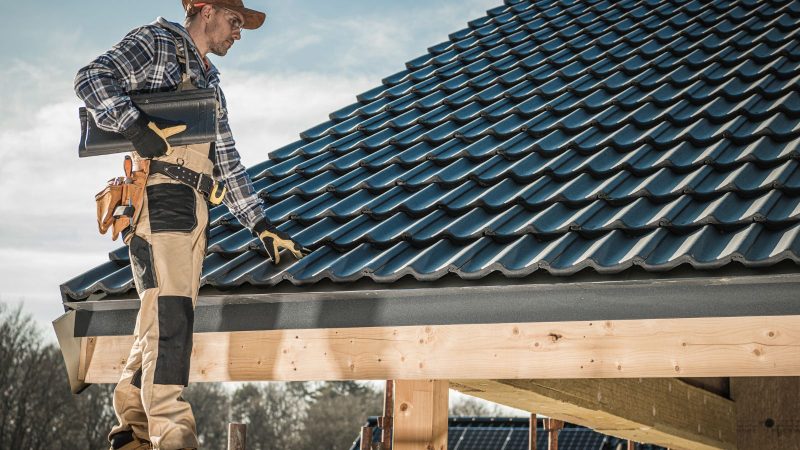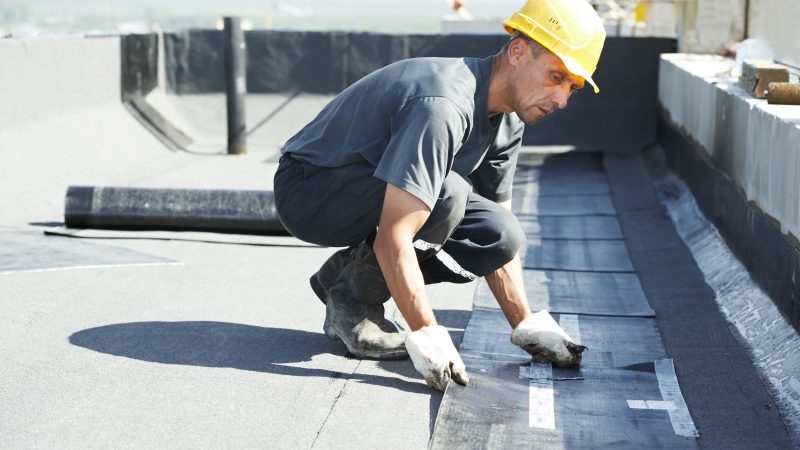
When we think of architectural masterpieces, our minds often drift to grand facades, intricate details, and stunning interiors. But let’s not forget the unsung hero of any remarkable structure: the roof! It’s not just a cap on the building; it’s a crowning glory that plays a vital role in the overall aesthetic and functionality. Let’s explore how roofing contributes to some of the most iconic architectural marvels in the USA, and have a bit of fun along the way!
The Flat Roofs of Frank Lloyd Wright
Frank Lloyd Wright is a name synonymous with groundbreaking architecture, and his use of flat roofs was revolutionary. Take the Fallingwater house in Pennsylvania, for instance. This masterpiece doesn’t just sit on its landscape; it becomes one with it. The flat roofs extend over the waterfall, creating a harmonious blend with nature.
Fun Fact: Frank Lloyd Wright’s flat roofs were designed to provide expansive outdoor living spaces and panoramic views. However, they also posed challenges in rainy climates, leading to some leaky roofs!
The Gothic Pitched Roofs of Cathedrals
Moving to the other end of the spectrum, let’s talk about the stunning Gothic cathedrals like St. Patrick’s Cathedral in New York City. These structures boast steeply pitched roofs that not only add to their dramatic verticality but also serve practical purposes like effective rainwater drainage.
Did You Know?: The pointed arches and ribbed vaults of Gothic architecture are not just for show. They distribute weight more efficiently, allowing for taller and more slender walls.
The Colonial Revival Roofs
The Colonial Revival style, popularized in the late 19th and early 20th centuries, often features gabled roofs and dormer windows. Think of the iconic Mount Vernon in Virginia, George Washington’s plantation house. The gabled roof here isn’t just historically charming; it’s practical, providing ample attic space and promoting efficient ventilation.
Historical Tidbit: The symmetrical design and steep gabled roofs of Colonial Revival homes were inspired by the classical architecture of ancient Greece and Rome, symbolizing democracy and order.
The Modern Marvels
In more contemporary times, we see innovative uses of roofing in structures like the Guggenheim Museum in New York, designed by Frank Gehry. The undulating forms and unique materials make the roof a standout feature. Similarly, the green roofs of the California Academy of Sciences in San Francisco aren’t just eye-catching; they’re environmentally friendly, providing insulation and reducing rainwater runoff.
Eco-Insight: Green roofs are a growing trend in the USA, promoting sustainability by creating urban green spaces, reducing heat islands, and improving air quality.
The Industrial Chic of Converted Warehouses
Let’s not overlook the trend of converting old industrial buildings into chic urban spaces. The roofs of these structures, often left exposed, become a key element of the design. The use of steel beams, skylights, and even rooftop gardens can turn a mundane warehouse into a hip, vibrant living or working space.
Fun Trend: Exposed roofs with visible ductwork and beams have become a hallmark of the industrial aesthetic, adding a raw, authentic vibe to the interiors.
The Functional and Aesthetic Duality
Roofs are not just about looks; they’re about performance. Whether it’s the thermal efficiency provided by green roofs, the historical accuracy of colonial designs, or the sleek lines of modern architecture, the role of roofing in architectural masterpieces is multifaceted. A well-designed roof can:
- Enhance Aesthetics: Complementing the overall design of the building.
- Improve Energy Efficiency: Through materials and insulation.
- Provide Durability: Protecting the structure from the elements.
- Add Value: Increasing the property’s market appeal.
From the flat roofs of Frank Lloyd Wright to the green innovations of the 21st century, roofing plays a crucial role in the architectural landscape of the USA. Next time you admire a building, don’t forget to look up and appreciate the roof—it’s doing more than you might think!
So, whether you’re a budding architect, a history buff, or just someone who enjoys the beauty of well-designed structures, remember that the roof is the cherry on top of every architectural sundae. And who doesn’t love a good cherry?
If you’re inspired to enhance your own architectural masterpiece, look no further than Maupin Roofing. Visit maupinroofing.com for expert roofing solutions that combine aesthetic appeal with unmatched functionality.





